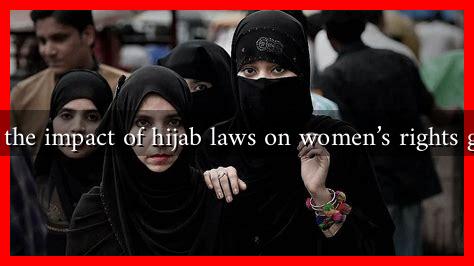-
Table of Contents
The Impact of Hijab Laws on Women’s Rights Globally
The hijab, a traditional headscarf worn by many Muslim women, has become a focal point in discussions about women’s rights and religious freedom. Laws regulating or banning the hijab have emerged in various countries, sparking debates about autonomy, identity, and the intersection of religion and state. This article explores the impact of hijab laws on women’s rights globally, examining case studies, statistics, and the broader implications for gender equality.
Understanding Hijab Laws
Hijab laws can be categorized into two main types: those that mandate the wearing of the hijab and those that prohibit it. Countries like Iran and Saudi Arabia enforce laws requiring women to wear the hijab in public, while nations such as France and Turkey have implemented bans on religious symbols, including the hijab, in public institutions.
The Case for Autonomy and Choice
At the heart of the debate surrounding hijab laws is the issue of women’s autonomy. Advocates for women’s rights argue that the choice to wear or not wear the hijab should be a personal decision, free from governmental interference. The following points highlight the importance of autonomy:
- Empowerment: Allowing women to choose their attire empowers them to express their identity and beliefs.
- Agency: Women should have the agency to make decisions about their bodies and how they present themselves to the world.
- Religious Freedom: The ability to wear the hijab is a matter of religious expression, which is a fundamental human right.
For instance, in countries like Indonesia, where the hijab is a personal choice, women report feeling empowered and confident in their identity. A study by the Pew Research Center found that 62% of Muslim women in Indonesia wear the hijab voluntarily, reflecting a cultural acceptance that promotes individual choice.
Case Studies: The Impact of Hijab Laws
To understand the global implications of hijab laws, we can examine specific case studies from different regions:
Iran: Mandatory Hijab Laws
In Iran, the government enforces strict hijab laws, requiring women to wear the hijab in public. This has led to significant pushback from women who view these laws as oppressive. Protests, such as the 2017 “White Wednesdays” movement, have emerged, where women publicly removed their hijabs to challenge the law. The consequences for defying these laws can be severe, including imprisonment and harassment, which raises concerns about women’s rights and freedoms.
France: The Burqa Ban
In contrast, France’s ban on the hijab in public schools and other government institutions is framed as a measure to uphold secularism. However, critics argue that this law disproportionately affects Muslim women and infringes on their rights. A report by the French Council of the Muslim Faith indicated that the ban has led to increased discrimination and social exclusion for Muslim women, limiting their access to education and employment opportunities.
Global Trends and Statistics
The impact of hijab laws extends beyond individual countries, influencing global trends in women’s rights:
- Increased Polarization: Hijab laws often polarize societies, leading to tensions between secular and religious communities.
- Gender Disparities: Countries with strict hijab laws tend to have higher gender disparities in education and employment.
- International Advocacy: Organizations like Amnesty International and Human Rights Watch advocate for the rights of women affected by hijab laws, highlighting the need for global solidarity.
According to a 2020 report by the World Economic Forum, countries with restrictive hijab laws rank lower on the Global Gender Gap Index, indicating a correlation between such laws and broader issues of gender inequality.
Conclusion: The Path Forward
The impact of hijab laws on women’s rights is complex and multifaceted. While some women embrace the hijab as a symbol of their faith and identity, others view mandatory hijab laws as a violation of their rights. The key takeaway is that women’s autonomy must be at the forefront of discussions surrounding hijab laws. Governments should prioritize individual choice and religious freedom, ensuring that women can make decisions about their attire without fear of repercussion.
As the global conversation about women’s rights continues to evolve, it is crucial to recognize the diverse experiences of women around the world. By fostering an environment of respect and understanding, we can work towards a future where all women, regardless of their attire, are empowered to live freely and authentically.
For further reading on women’s rights and religious freedom, visit Amnesty International.


